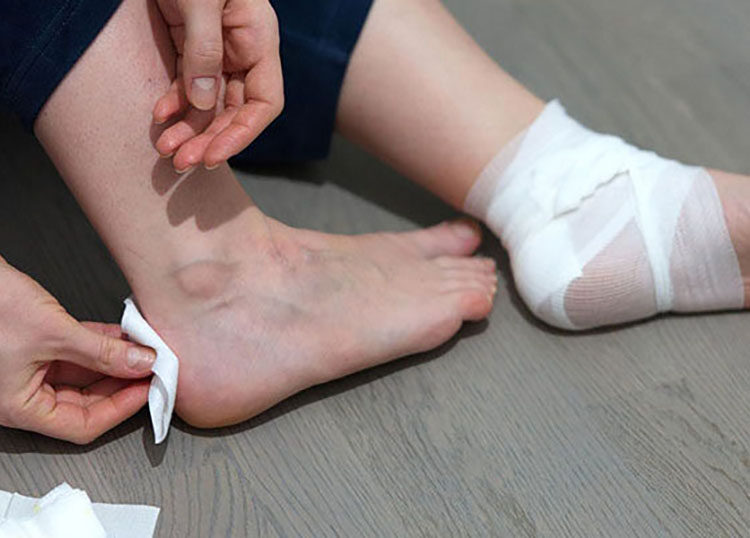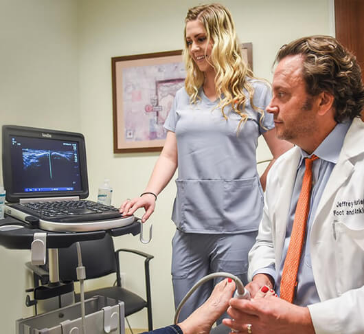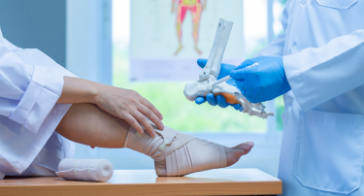
Schedule an Appointment
The feet are particularly vulnerable to injuries, such as cuts, that may penetrate the skin. For minor foot wounds, treatment typically involves the use of bandages or skin glue to aid in the healing process. It's crucial to keep such wounds covered and dry to accelerate healing. However, if you have stepped on glass or rocks, an X-ray might be necessary to ensure that no debris remains in the foot, which could complicate the healing process.
In the case of more serious foot wounds, it is highly beneficial to keep weight off the foot as much as possible. This reduction in pressure can significantly aid in the healing process. If the wound is actively bleeding, applying direct pressure can help; however, if this does not stop the bleeding, or if signs of infection such as fever are present, it is crucial to seek professional medical attention.
Proper foot wound care becomes even more critical if you are living with diabetes, due to the slower healing rates and higher risk of complications such as infections. Diabetic foot wound treatment should be handled promptly and effectively to prevent serious issues. If you have diabetes and suffer from a foot wound, or need information on foot wound care, it is advisable to consult with a specialist. Visiting a podiatrist who specializes in diabetic foot care can ensure that you receive comprehensive care tailored to manage and heal foot wounds effectively. An Urgent Care For Feet podiatrist can assess your specific needs and provide the essential foot and ankle treatment, making sure your foot health is not compromised. Remember, timely and appropriate care can prevent complications and promote faster healing of foot wounds, especially critical for diabetic patients.

Meet The Specialist
We practice a minimally invasive approach to your foot or ankle problem with surgery as the last option.
Choose a Location Nearest You
Why Urgent Care for Feet

We can treat 90% of cases seen in an emergency room for a fraction of the cost.

All of our doctors have on average 15+ year of experience specializing in foot and ankle care.

We provide on site x-ray that is designed specifically for foot and ankle. This will avoid re-taking an x-ray done improperly at an ER or standard Urgent Care.
Frequently Asked Questions
Foot cuts can occur from stepping on sharp objects like glass, nails, or metal, walking barefoot, accidents with sharp tools, or excessive friction from ill-fitting shoes.
Seek medical attention for a foot cut if it is deep, bleeding profusely, shows signs of infection (redness, swelling, warmth, pus), or if you cannot remove all debris.
Clean a foot cut by rinsing it under lukewarm running water. Use soap around, not directly on, the wound. Gently pat dry with a clean cloth or sterile gauze.
Yes, cover a foot cut with a sterile bandage to protect it from bacteria and reduce the risk of infection. Change the bandage daily or whenever it becomes wet or dirty.
To prevent infection, clean the cut thoroughly, apply a thin layer of antibiotic ointment if not allergic, and keep it covered. Monitor the cut for signs of infection.
Get a tetanus shot if you haven’t had one in the past ten years or if the cut is deep or dirty and your shots are not up to date. Consult a healthcare provider for the best advice.
If you step on a rusty nail or metal object, clean the wound thoroughly and seek medical attention to assess the need for tetanus or other treatment, even if the cut seems minor.
The healing time for foot cuts can vary from a few days to a couple of weeks depending on the depth and care of the wound. Keep it clean and monitored for signs of complications.
Signs of infection include increased pain, redness, swelling, warmth, pus, or if the cut starts to smell. If you notice these signs, seek medical attention immediately.
Yes, you can use over-the-counter antibiotic ointments on foot cuts unless you have an allergy to the ointment. This can help prevent infection and aid in healing.
If a foot cut is not healing, consult a healthcare provider. Persistent wounds may be a sign of underlying conditions such as diabetes or vascular disease.
If you have severe pain, difficulty moving the foot or toe, or if the cut is very deep, be concerned about possible nerve or tendon damage. Seek immediate medical evaluation to address these concerns. Proper initial care and vigilance in monitoring are essential for the effective management of foot cuts, helping to ensure a full and swift recovery.


